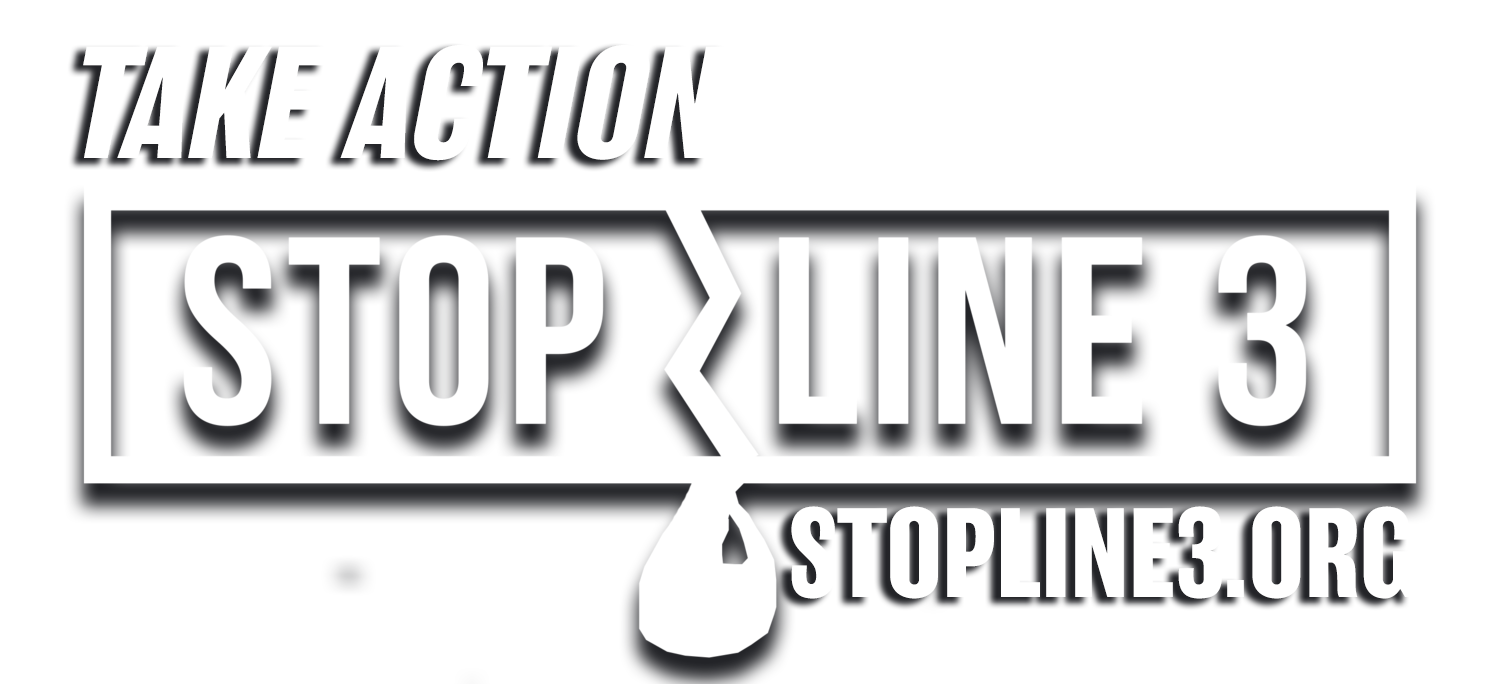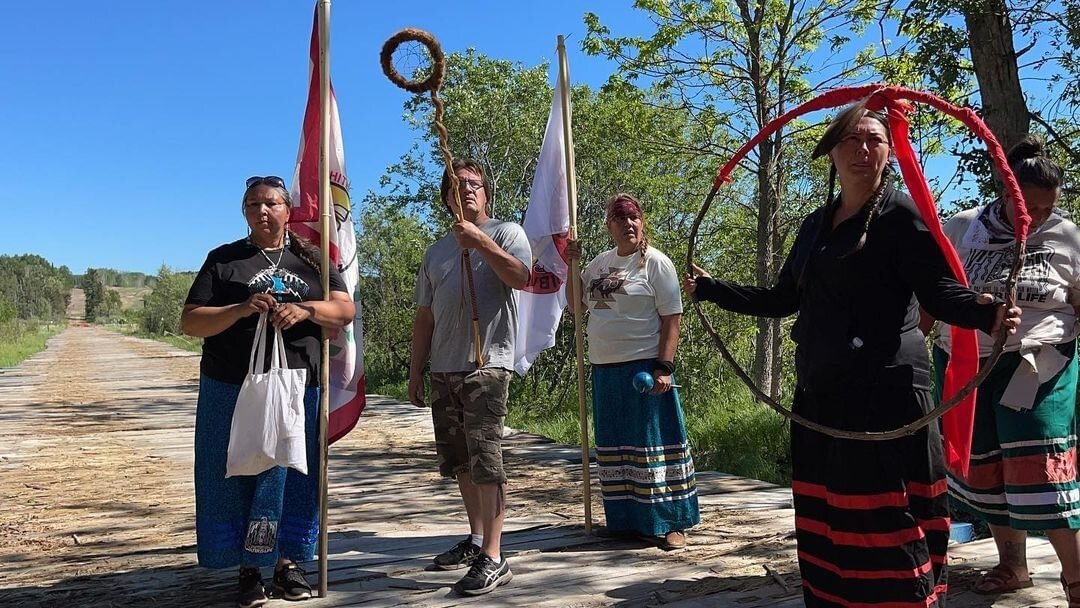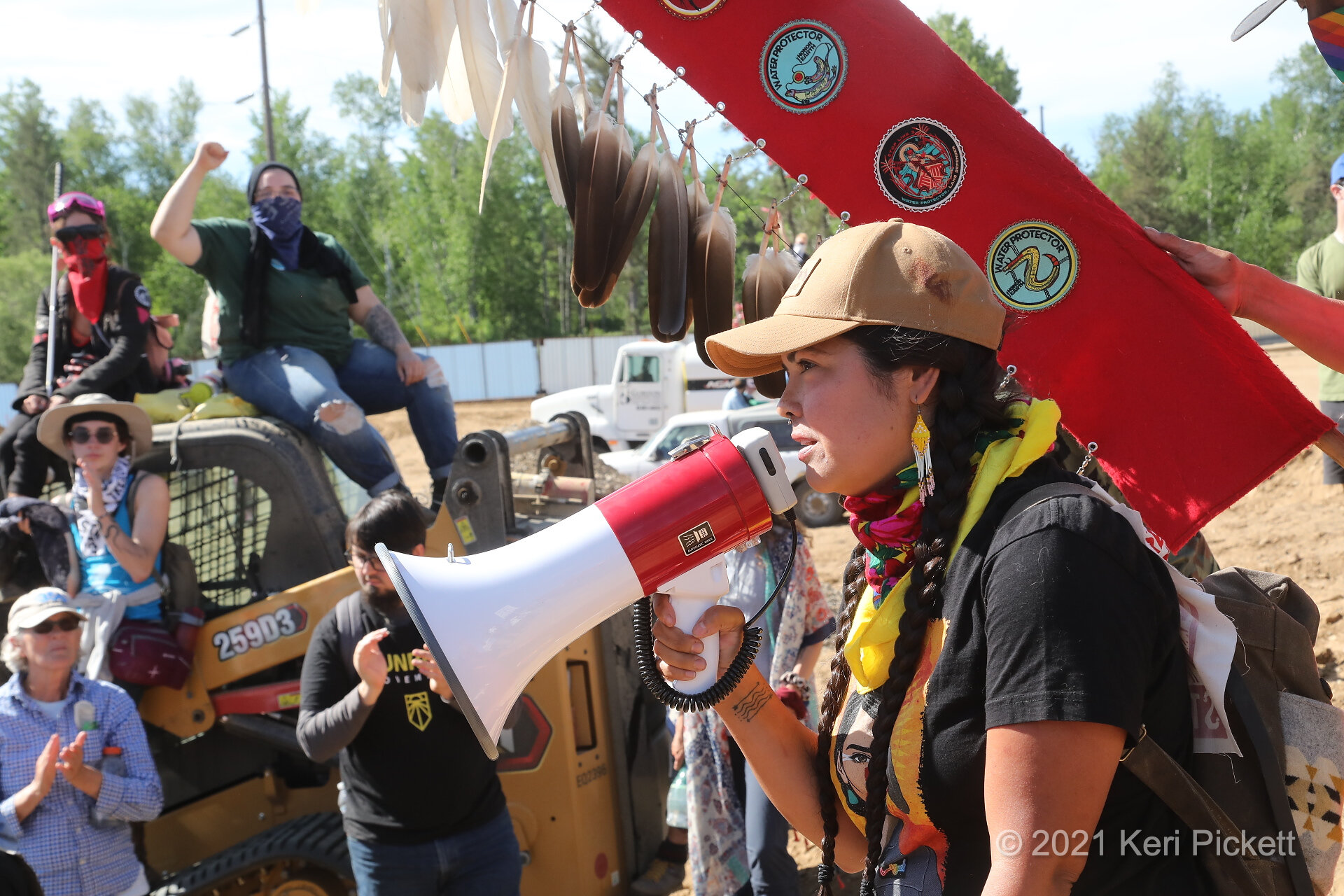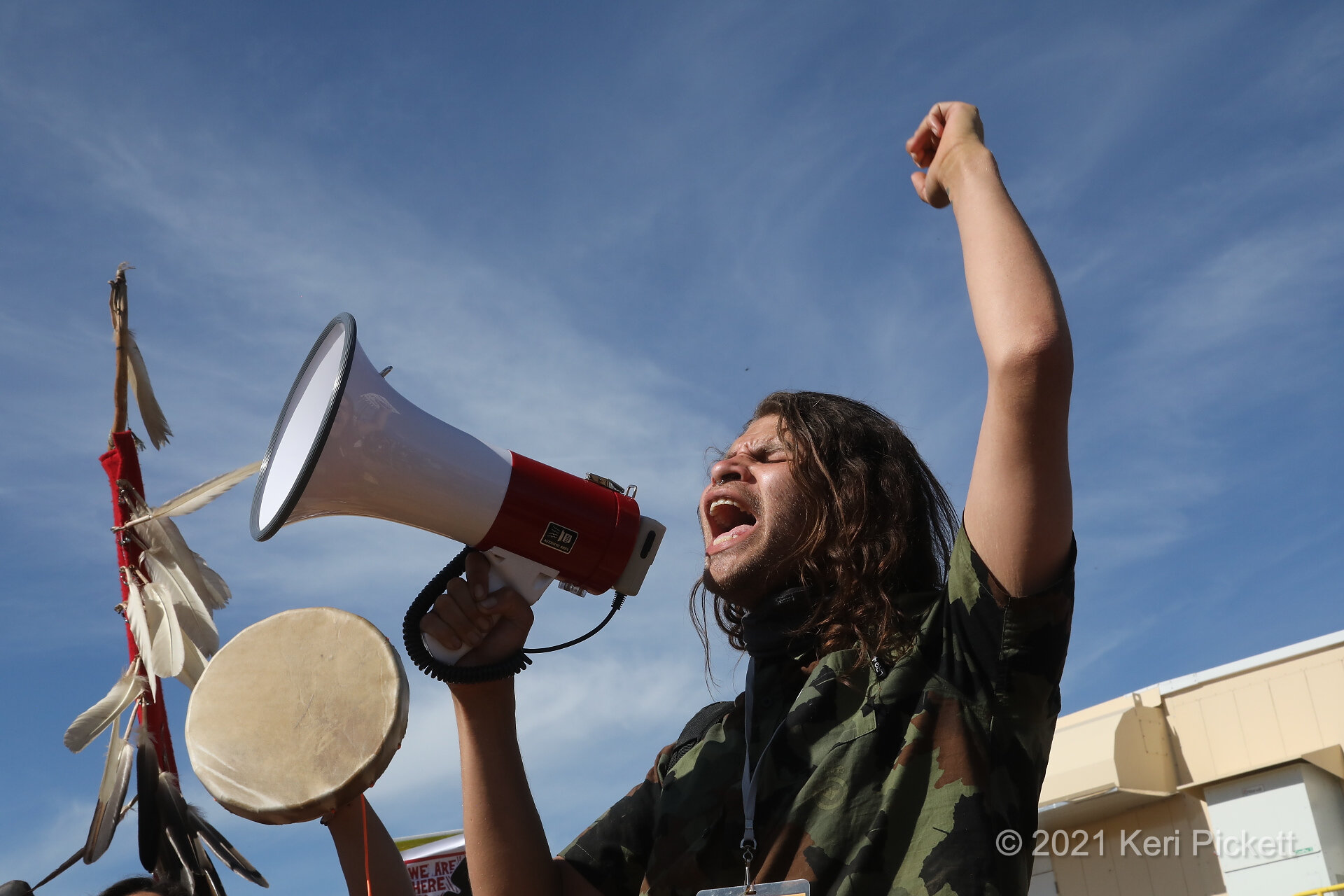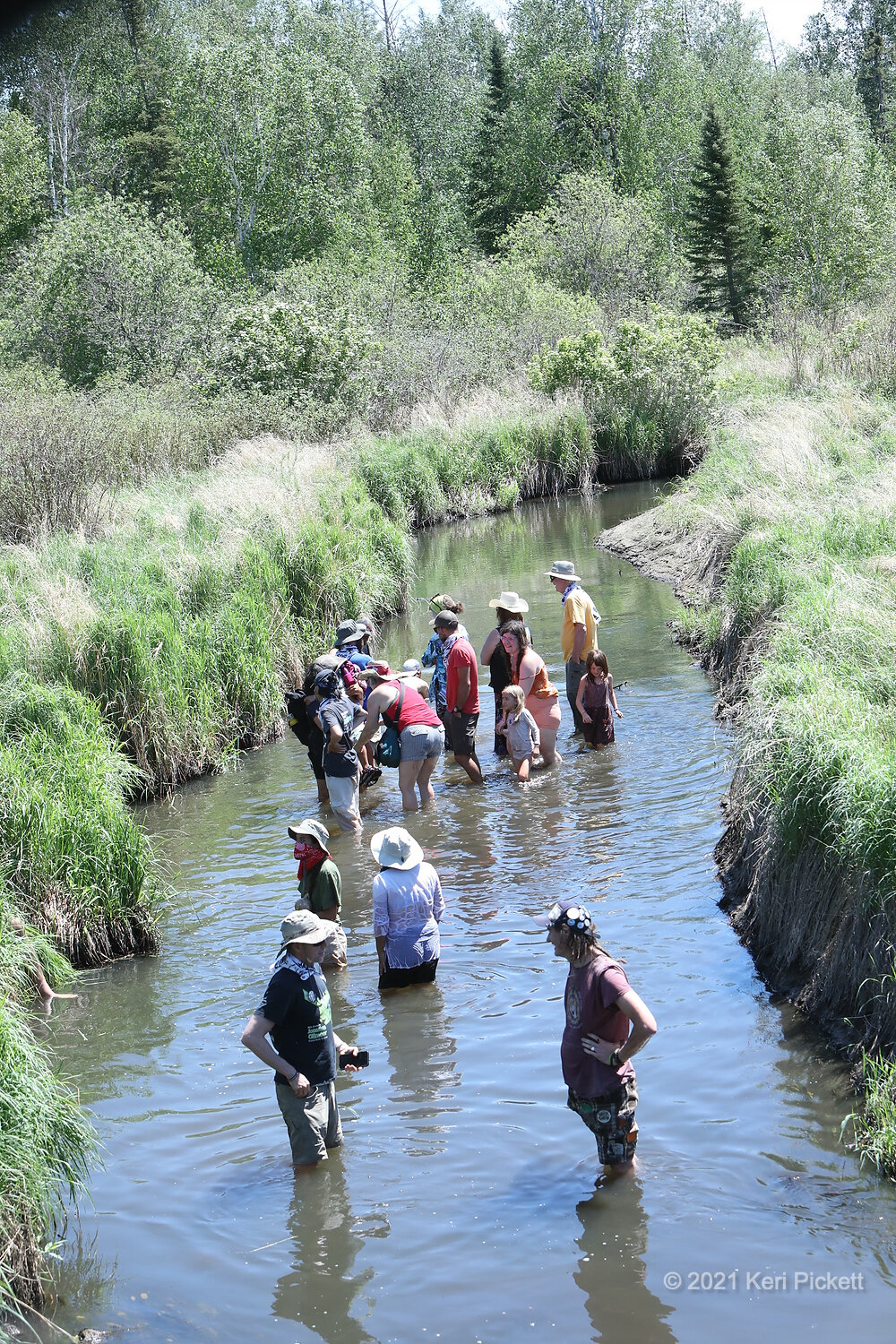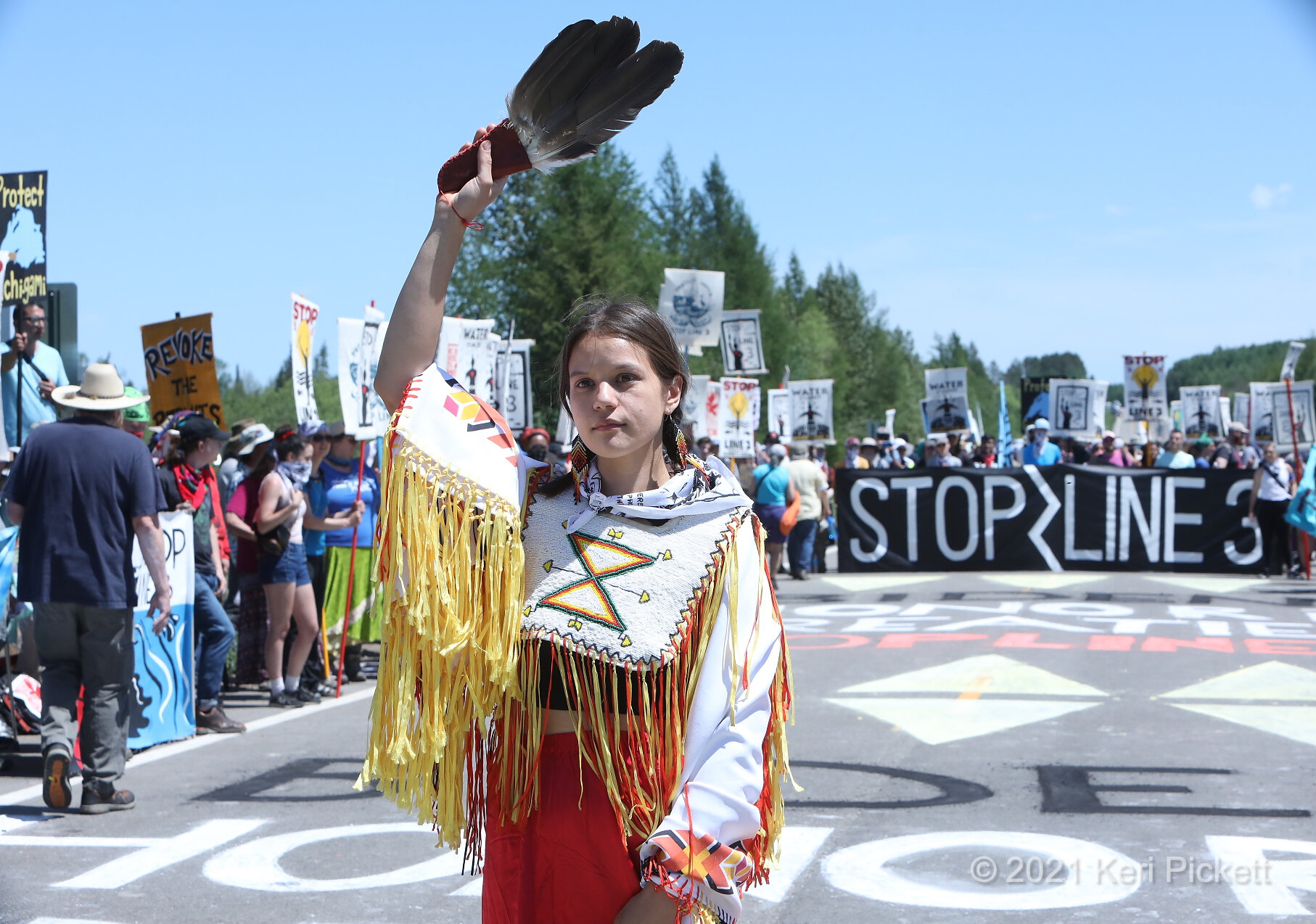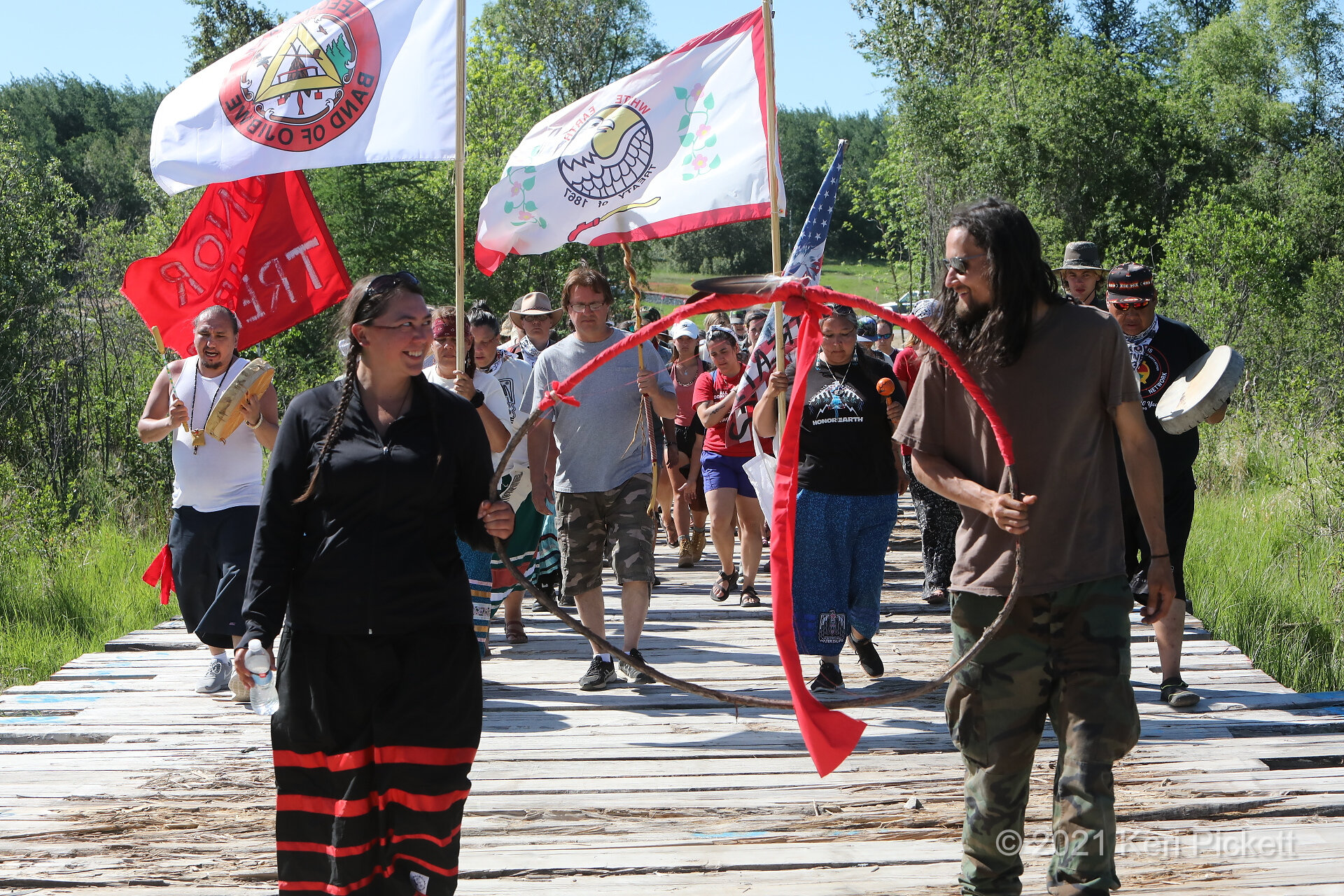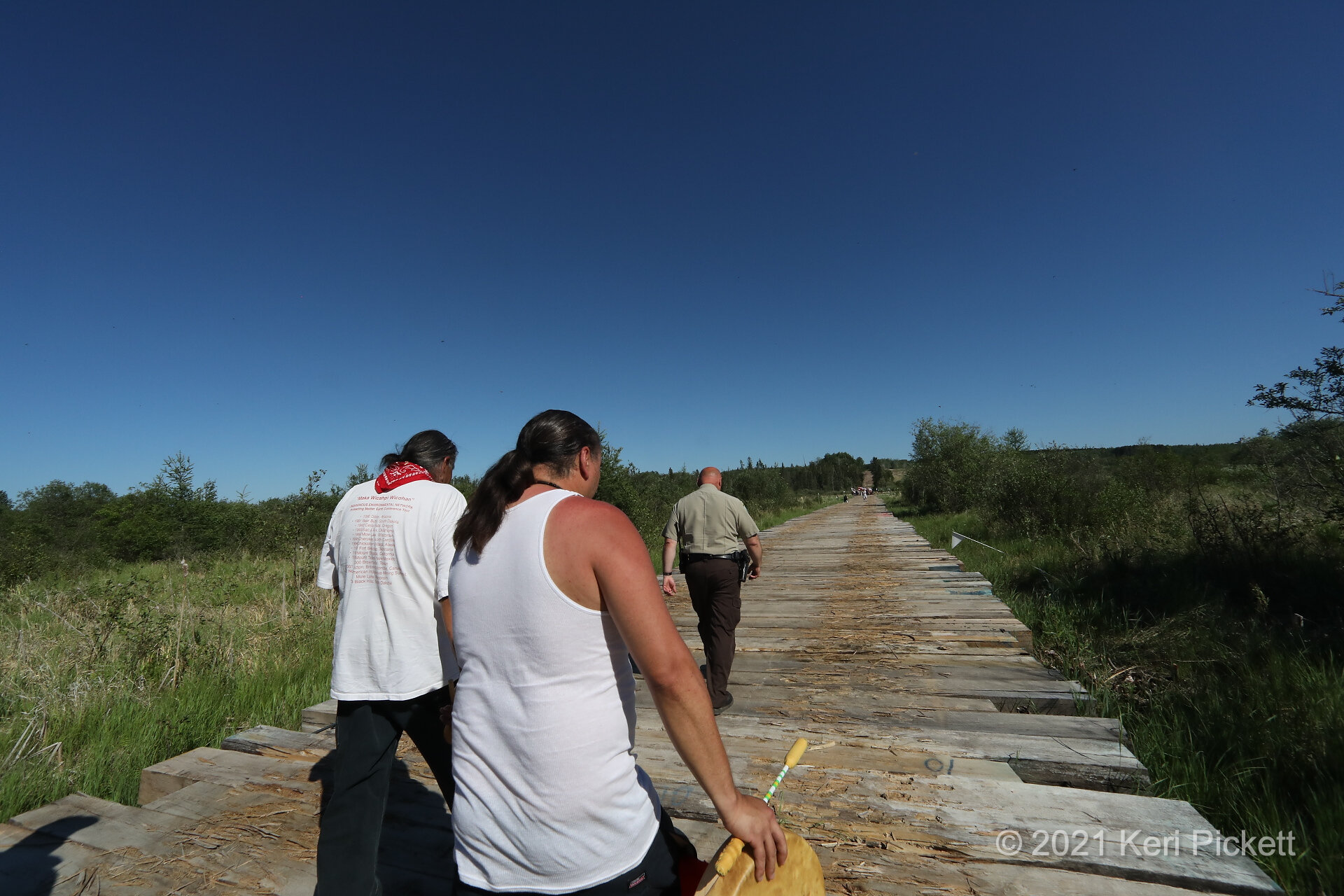By ALAN WEISMAN
JUNE 30, 2021 3 AM PT
It was mid-afternoon on June 7 when nearly three dozen sheriffs, deputies and police arrived at the Two Inlets pump station site on Enbridge Inc.'s Line 3 oil pipeline, now under construction in northern Minnesota. In riot helmets, wielding long truncheons, they formed two lines and stood in unusual 90-degree heat, awaiting orders to move in against nearly 200 nonviolent protesters.
Earlier, I’d watched a Homeland Security helicopter repeatedly buzz the demonstrators, apparently attempting to dislodge them with clouds of choking dust.
“Stay! Don’t let them weaponize our Mother Earth against us!” someone yelled, although many had already chained and padlocked themselves to earth-moving equipment, pipeline infrastructure and an old blue speedboat that now blocked the way into the site.
Once completed, the pump station the protesters had seized would push heavy crude bitumen — tar sands oil, up to three times dirtier than conventional oil — from western Canada through Minnesota and Wisconsin to a terminal on Lake Superior. Burning the pipeline’s daily potential capacity of 915,000 barrels would more than double Minnesota’s annual output of greenhouse gases.
That was one reason protesters were here. “They knew about climate change in the ‘80s,” said one 27-year-old woman. “We should’ve been getting off fossil fuels before I was born.”
With the Dakota Access pipeline’s permit under reconsideration and the Keystone XL pipeline canceled, Line 3 is a last gasp at keeping the filthy tar sands industry alive. The science isn’t debatable: To counter mounting climate catastrophes, and to hold global warming to the Paris accords’ limit of 1.5 degrees Celsius (2.7 degrees Fahrenheit) tar sands must stay in the ground. Anything else risks incinerating our species’ future.
About 20 miles from where the pump station protesters would ultimately be unchained and arrested, nearly 2,000 more demonstrators had another reason to stop Line 3: What the local Ojibwe, Anishinaabe and Chippewa call Misi-Ziibi.
If Enbridge has its way, Line 3, which partly reroutes and replaces a decaying older pipeline, will bore under the Mississippi River twice as it flows north and then loops south from its source, Lake Itasca. Any leaks and spills — by one count of company records, Enbridge is responsible for more than 1,000 between 1996 and 2014 — could poison the Mississippi and more: Line 3 will cross 211 other rivers and streams, and threaten scores of lakes and wetlands in Minnesota’s choicest wild rice harvesting region, granted to Indian tribes by 19th century treaties.
The first Mississippi crossing site lies just miles from a state park where countless tourists have hopped across the trickle that soon widens and deepens into America’s most famous river. Even non-Natives consider the headwaters sacrosanct.
“We’re going to protect the sacred,” vowed Leech Lake band Ojibwe Nancy Beaulieu to the protesters gathered on the river’s reedy banks, “for all those not born yet.”
In Ojibwe culture, women are the water protectors; Beaulieu is one of several leading a seven-year fight against Line 3. Recently, they’ve been dealt two setbacks. First, Minnesota’s Court of Appeals rejected a challenge to Enbridge’s state permit to run Line 3 through tribal land, despite its threat to water quality and sovereign treaty rights.
Then last week, despite President Biden’s climate agenda, the Army Corps of Engineers went to court to defend its permits for Line 3, which had been rushed through in the last days of the Trump administration. With Enbridge racing to complete the pipeline before further appeals can stop them, sheriffs have begun raiding the remaining “resistance camps” where water protectors are blocking construction with their bodies.
Biden could still act. He could cancel the pipeline by executive action, as he did when he blocked the Keystone XL permits on his first day in office.
“It’s a total betrayal by the administration,” said White Earth Ojibwe leader Winona LaDuke about last week’s court filing. “The Army Corps of Engineers under Trump should not be the Army Corps under Biden.”
A few days after the June 7 protests, LaDuke took me canoeing on the meandering Shell River, which Line 3 will cross five times. We dragged the boat more than paddled, because like the far west, Minnesota is in deepening drought.
In water still clear enough to drink, I saw big freshwater mollusks that give the Shell its name, and long, flowing wild rice stalks LaDuke will harvest this fall — unless the river keeps dropping. It enrages her that Minnesota is allowing Enbridge to pump almost 5 billion gallons of groundwater as it tunnels through the state.
Her tribe now manufactures solar furnaces; they know the time to stop fossil fuels is running out. LaDuke believes the stand she and her Ojibwe water protector sisters are taking against Enbridge is among humanity’s last chances to confront an existential threat.
“We’re going to fight to the end,” she said. “But we’re the poorest damn people. It’s devastating how callous these politicians and corporations are to life.”
“We’re going to fight to the end,” she said. “But we’re the poorest damn people. It’s devastating how callous these politicians and corporations are to life.”
Whether Line 3’s CO2 ends up in our atmosphere depends on the president — “Our only hope now,” in LaDuke’s words.
Not long ago, a white neighbor told LaDuke , “We’re thinking the Indians are going to stop this pipeline.”
“The Indians could use a little help, ma’am,” she replied.
“This is a racist pipeline project forced down the throats of our people, an ecological time bomb and a giveaway to a Canadian multinational oil interest.”
Journalist Alan Weisman is the author of the bestseller “The World Without Us” and “Countdown,” winner of the 2013 Los Angeles Times Book Prize for science and technology. His next book explores our best hopes for surviving the coming decades
The Progressive
Biden’s Position on Line 3 Undoes his Climate Commitments
Climate activists and Indigenous leaders continue the fight against the Enbridge Line 3 pipeline, which is a violation of Indigenous treaties, human rights, and the planet.
JUNE 29, 2021
The final Minnesota review, too, had been challenged. Plaintiffs included the Mille Lacs Band of Ojibwe, the Red Lake Nation and the White Earth Nation, Honor the Earth, the Sierra Club, and the Minnesota Department of Commerce.
“The decision today is disappointing, but our fight for our water and what is right continues,” said Houska. “Line 3 is a clear violation of Indigenous rights, an abomination to climate science and to human rights. Our resistance is clearly growing, we cannot stop and we will not stop.”
On top of all of these decisions, Enbridge Line 3 has amended the amount of groundwater it requested to be allowed to pump during construction from 510 million to nearly 5 billion gallons, which the Minnesota Department of Natural Resources approved on June 4.
It amounts to ten times as much groundwater. Like other parts of the country, the Midwest is currently faced with a severe drought. Moreover, these waters are critical for the wild rice that grows in the region and is crucial to Native communities. Opponents of the pipeline worry that this pumping could affect the quality and quantity of the groundwater. It could also impact the wetlands, streams, and lakes along the pipeline’s route.
According to the Minnesota Reformer, “the president of the Minnesota Chippewa Tribe sent a letter to Governor Tim Walz raising concerns that the Department of Natural Resources didn’t sufficiently engage with tribes before it approved” this change.
In other Enbridge Line 3 news, the Star Tribune recently reported that an Enbridge 3 contractor has been fined $25,000 for a serious safety lapse that caused a worker’s death on the job.
In Michigan, Enbridge Line 5 faces serious delays as the U.S. Army Corps of Engineers announced on June 23 that it will prepare a detailed Environmental Impact Statement—instead of merely conducting an Environmental Assessment—of the underground tunnel proposed for the Straits of Mackinac.
On Monday June 28th and 29th, Hubbard County Blocks Indigenous-Owned Property and Line 3 Resistance
“This is a blatantly unlawful attempt to target and repress Indigenous-led efforts to defend our land and water. The state of Minnesota appears to not understand treaty law, it also seems Minnesota doesn’t understand U.S. property law either.”
